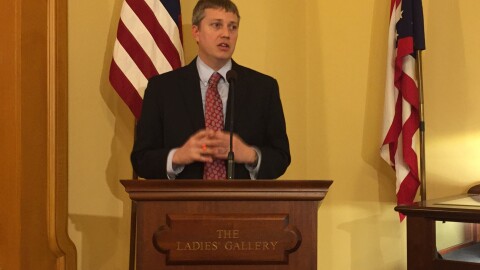Ohio’s unemployment rate went up in June to 4.5 percent. That’s compared with 4.3 percent in May, which was the lowest level since July 2001. But the number of employed Ohioans last month increased a bit, too.
Andrew Kidd, an economist with the conservative think-tank Buckeye Institute, says the slightly higher number of unemployed Ohioans doesn’t tell the whole story.
“Really, that’s just seeing more people enter the labor force, so we have more people searching for jobs because we have an environment that is pro-job growth," Kidd says.
Kidd notes many of the jobs that were new in June were temporary or in the service sector. But Kidd says there’s something else that could affect Ohio’s jobless numbers in the future – he’s watching to see what impact the newly announced tariffs will have on Ohio.
“We did see 9,000 new jobs this month but we saw some huge losses in construction sector and trade sector, and those are two areas where we kind of expecting to see the tariffs impacting,” Kidd says. “You know when you have job losses there, it kind of starts to ripple throughout the rest of the economy. If you don’t have construction, then you don’t have new businesses or new apartments so population growth stunts. You don’t have new businesses to help create new jobs.”
Hannah Halbert of the progressive group Policy Matters Ohio says she’s concerned when she looks at the latest job numbers.
“So if we look back to 2005, that is when the state did a huge tax overhaul,” Halbert says. “We have grown by 3.5 percent since then. The nation has grown by 11 percent. So there’s this long term trend of under-performance.”
Halbert says she’s also looking at the long-term income inequality in Ohio that she says has taken place since the end of the Great Recession.
“Ohio’s top 1 percent has pocketed over 30 percent of the total income growth in those nine years,” Halbert says. “So the top 1 percent in Ohio, on average, made more than 18 times the bottom 99 percent. And so that inequality piece doesn’t get picked up in our job growth numbers and that’s hugely important, especially when we look at the June numbers and realize that job growth really happened in leisure and hospitality.”
As Ohio goes into the fall election season, candidates are likely going to be scrutinizing upcoming numbers and providing their own points of view about what they mean.




